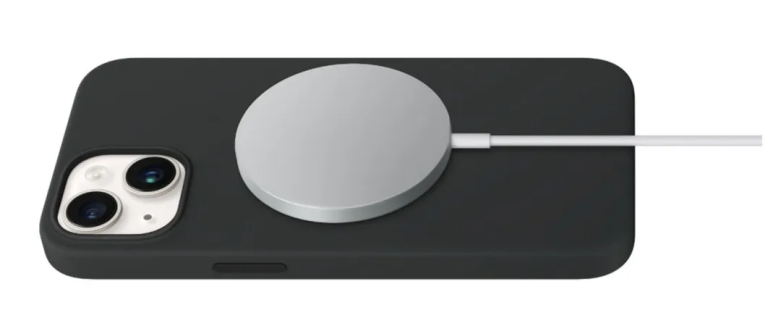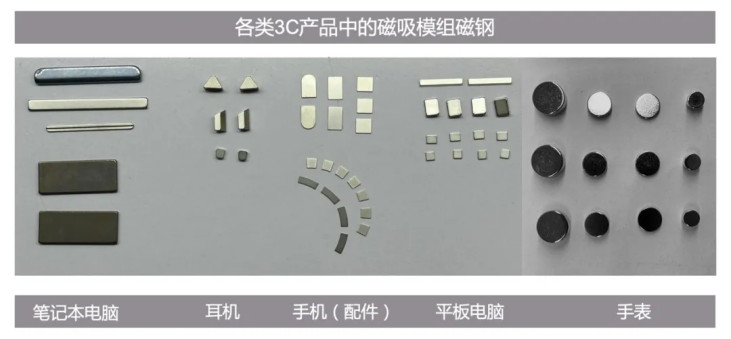3C consumer electronics primarily include six major categories: smartphones, tablets, laptops, smartwatches, earphones, and wireless charging devices. Taking Apple products as examples, these would be the iPhone, iPad, Mac, Apple Watch, AirPods, and MagSafe accessories.
Where is neodymium iron boron (NdFeB) magnet used in these products? What is the working principle? And what are the requirements for these magnets? This article will answer these questions.
In consumer electronics, magnets are mainly used in three modules: the acoustic module, the motor module, and the magnetic attachment module.
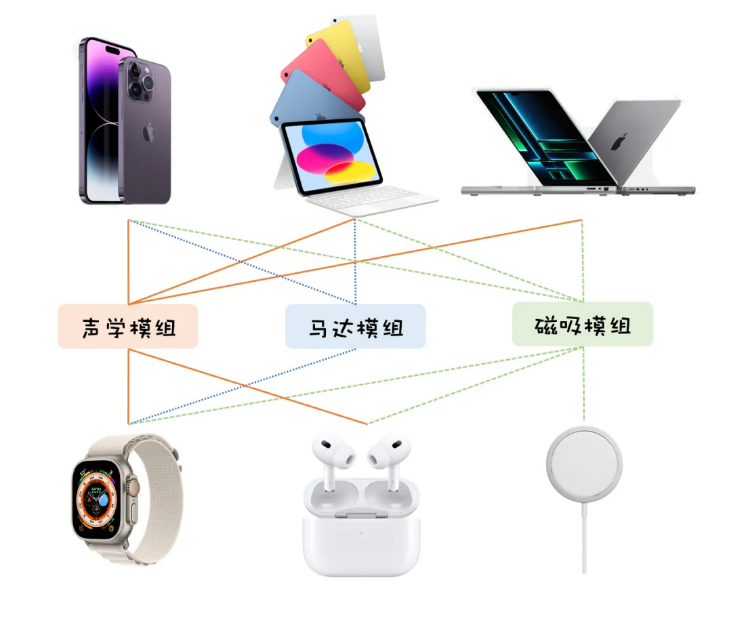
1. The acoustic module
As the name suggests, is a sound-emitting unit, and its common name is a loudspeaker. The performance of a speaker has a significant impact on the sound quality. A magnetic field is generated in a current-carrying wire. When an alternating audio current passes through the coil of a speaker (i.e., the voice coil), a corresponding magnetic field is produced in the voice coil. This magnetic field interacts with the magnetic field generated by the magnet built into the speaker. This force causes the voice coil to vibrate along with the audio current in the magnetic field of the permanent magnet built into the speaker. The diaphragm and voice coil of the speaker are connected together. When the voice coil and the diaphragm of the speaker vibrate together, they push the surrounding air to vibrate, thereby generating sound from the speaker. As shown in the following figure, this is the principle by which a horn occurs.

The requirements for neodymium iron boron magnets in the acoustic modules of different 3C products are also not the same
Mobile phone products such as iPhone are used frequently and have certain requirements for the weight of the phone. Therefore, high-performance (54SH) and small-sized magnets are needed to achieve the purpose of lightweight.
On computers such as Mac or iPad, on the one hand, sound quality needs to be considered; on the other hand, their volume is larger than that of mobile phones, and there is more available space. Therefore, magnets with slightly lower performance (52SH), larger volume and more diverse shapes will be adopted.
Watch products like this are small in size and users' general demand for them is that they can make sounds and have low requirements for sound quality. Therefore, magnets with lower performance (50 hours) and smaller size are used.

2. Motor Module: VCM Voice Coil Motor and Linear Vibration Motor
The VCM voice coil motor is a critical component of the AF (Auto Focus) camera module, enabling the lens to move vertically for switching between near and far focus, thereby achieving sharper images. Similar to the working principle of a loudspeaker, the permanent magnet in the camera module provides a constant magnetic field. When the coil is energized, it experiences a force within this magnetic field, driving the lens to move forward or backward. Different lenses serve distinct functions, and the shape and performance of their internal magnets vary significantly.
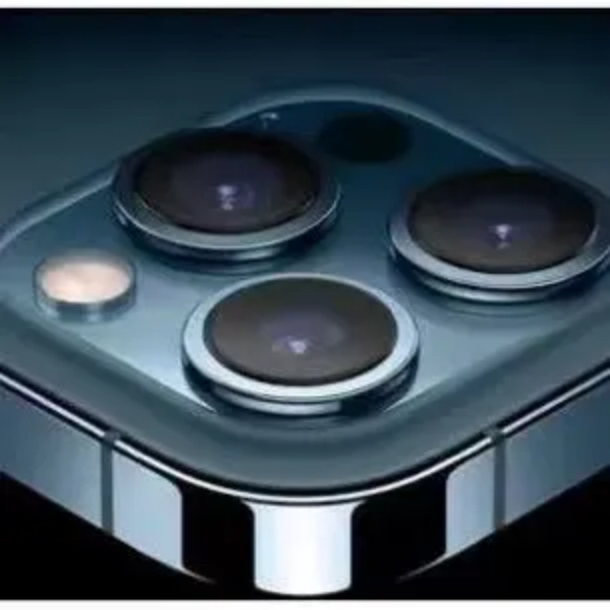

The linear vibration motor is the primary component enabling vibration functionality in mobile phone products. The energized coil experiences an Ampere force within the magnetic field (provided by neodymium iron boron permanent magnets), thereby driving the motor to vibrate. Among these, the LRA (Linear Resonance Actuator) is a type of motor widely used in smartphones that provides haptic feedback through tactile effects. The performance of the LRA directly impacts the user's tactile experience.
The LRA is driven by alternating current (AC), which can generate instantaneous high voltage, enabling extremely fast start-stop response and precise vibration feedback. By altering the AC frequency, different vibration effects can be achieved to match various smartphone usage scenarios. Depending on the motor type, the shape and performance characteristics of the permanent magnets also differ entirely.
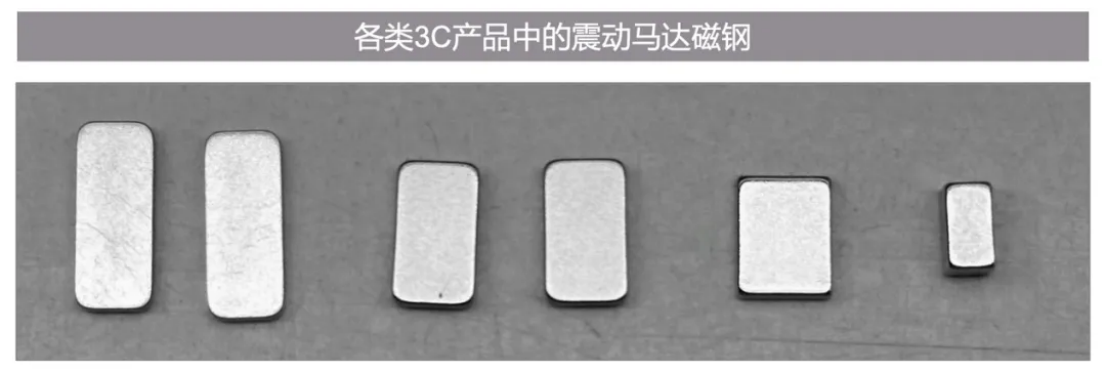
3. The magnet magnetic suction module
It is the most easy to understand, is to use the magnet this attribute of ferromagnetic materials is attractive, is mainly used in all kinds of adsorption, adsorption, such as all kinds of wireless charging mobile phone watches, such as the closing of the computer screen, support tablet, there is a magnet in adsorption. These adsorption components all have different shapes and performances in different end products and are customized according to actual needs.
